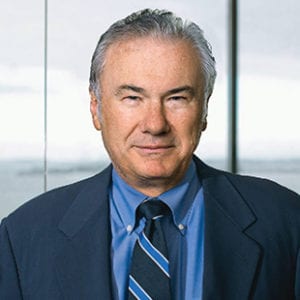Fewer managers, more tech talent: How early AI investments rewired company org charts
The value of competing 5G technology standards shouldn’t be judged by number of patents alone, according to new research by David Teece.

Whether its mobile phones or autonomous cars or telemedicine, 5G is a game-changer, enabling cellular connections up to 100 times faster than 4G. Unfortunately, not all 5G implementations are alike: 5G technology portfolios are easily manipulated by patent holders, and determining which set of technologies and standards are most viable is not always straightforward.
That’s according to Berkeley Haas Prof. David Teece, who examined the problem of 5G patents in a new article for California Management Review titled, “Technological Leadership and 5G Patent Portfolios: Guiding Strategic Policy and Licensing Decisions.” Teece, the Thomas W. Tusher Professor in Global Business and director of the Tusher Initiative of Intangible Assets, highlights the flaws of the patent licensing system and the use of patent counts as an indicator of a technology’s value.
Patent licensing systems
When 5G developers patent their technology, they work with standard development organizations (SDOs) that in turn work with the 3rd Generation Partnership Project (3GPP) to make sure that the patents are commercially viable and meet the standardized elements for foundational technologies. Once the patent is licensed, 3GPP and these developers gain their profits from patent licensing fees and royalty payments which are determined by the fair, reasonable, and nondiscriminatory (FRAND) criteria.
Teece observed that under this licensing system, policing unlicensed use of patent data is often complex and difficult. That means that while these patents may be protected legally, they may not be protected practically. Moreover, just because a license is available does not mean royalties will be paid: The SDOs that patent-developers work with only provide the FRAND framework, but do not assist in developing an official licensing program. Teece suggests that patent owners must be willing to develop a licensing program that users must sign up for, and courts must be willing to charge patent infringers. These two actions may help prevent unlicensed users from getting away with not paying royalities.
Manipulation of patent counts

Another problem lies in the way that many companies determine which patents to license. It is tempting to look at the number of patents generated as an indicator of their quality, but quantity does not equal quality. “Patent counts are misleading proxies for technological contribution and leadership,” says Teece. “When well-respected media outlets like the Wall Street Journal and the Financial Times trumpet the patent rankings of companies and countries as proxies for patent value and technological leadership, with minimal if any qualification, it reinforces widespread ignorance about the utility of patent statistics.”
Patent counts can be deceiving and because they are likely biased, he says. For example, one country could hold the most patents, but others may be running the development and deployment services for 5G technology. On another note, the line between patents described as essential and patents simply declared as essential can be ambiguous. This makes patent counting inaccurate and invalid.
More importantly, Teece found that “the patent process is strategically manipulated by some countries and some companies.” For example, as China races to match the success of Western economies, it now owns about 36% of essential 5G patents. They may be partly due to China’s government subsidizing many of the patenting processes, however. Companies also have this same motivation for obtaining license control. In the past, higher patent counts were due to certain companies’ efforts to gain leverage in license negotiations.
With patent counts being easily manipulated, Teece described five key metrics used to understand patent data. Family counts and the number of technical contributions to standard bodies are found to be easy to manipulate and are not meaningful indicators of technological value, he says. On the other hand, forward-citation counts, the number of independent claims, and geographic coverage are difficult to manipulate, but are still not perfect in judging the value of a patent. For example, forward-citation counts do not always reflect commercial significance.
After understanding how patent data is analyzed, Teece lays out methods to for properly assessing leadership in 5G technology. These include performing a patent-by-patent analysis of leading patents, looking at comparable licenses (with running royalty licenses as the most reliable indicator of royalty rates), and utilizing aggregate market-observed choice data to calculate the profit impact of patented technologies.
“Manipulation happens all too often,” Teece says. Though some of the alternative methods to determine technological value may be costly, these steps can help make vast improvements to the future of wireless technology development and use, he argues
Teece’s article was published in the Spring 2021 issue of California Management Review, a journal that publishes academic work that engages scholars and contribute to the practice of management.
Posted in:
Topics:




